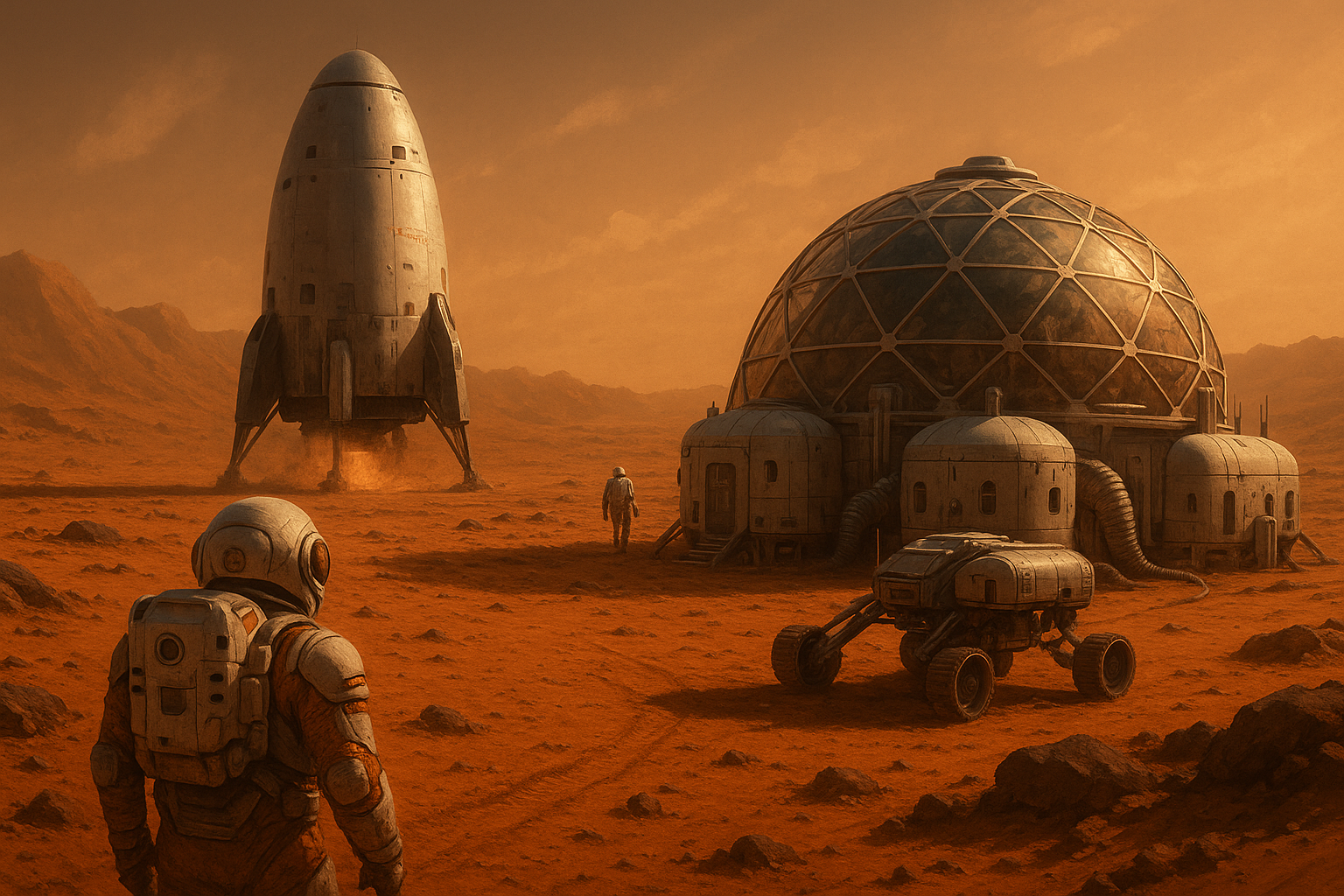Europe’s roadmap for self-sustaining habitats in orbit, on the Moon, Mars—and beyond
June 2025 – The European Space Agency (ESA) has unveiled Technology 2040, a sweeping strategic framework designed to usher in a new era of human settlement across the solar system. This initiative charts the course toward massive, autonomous space habitats in Very Low Earth Orbit (VLEO), on the Moon, and on Mars, transforming space from a frontier into a lived-in territory thetimes.com+13esa.int+13aseannow.com+13.
🏗️ Vision & Infrastructure
- “Space oases”: These habitats will be large, modular structures, assembled and manufactured in space using 3D printing and smart materials—no longer constrained by launch vehicle size linkedin.com+7esa-technology-broker.co.uk+7thetimes.co.uk+7.
- Closed-loop life support: Habitats will recycle water, air, food, and materials—operating sustainably and reducing dependency on Earth thetimes.com+13orbitaltoday.com+13linkedin.com+13.
- Autonomous construction: Robotics and AI will manage mining, building, and maintenance—from asteroids, lunar regolith, or Martian soils .
🧠 Smarter, Faster, Farther
- AI & robotics: Smart autonomous systems will operate habitats, explore extreme environments, and make real-time decisions using calibrated sensors and robotics .
- Next-gen propulsion & comms: Ion thrusters will enable efficient travel; quantum tech and optical links will support a solar-system-wide internet—even reaching Saturn .
🪐 Economics & Sustainability
- Circular space economy: Recycling space debris, mining celestial bodies, and repurposing materials will create a closed-loop economic model to drive growth and resilience linkedin.com+4orbitaltoday.com+4linkedin.com+4.
- Environmental stewardship: Satellites and habitats will be designed to minimize environmental impact, with zero-debris targets and VLEO operations to reduce carbon footprint payloadspace.com+2esa.int+2esa-technology-broker.co.uk+2.
- Economic potential: ESA estimates this ecosystem could yield a space economy worth €1 trillion by 2040 esa-technology-broker.co.uk+10orbitaltoday.com+10decrypt.co+10.
🛰️ The Roadmap & Collaboration
Published mid-June 2025, Technology 2040 is tightly aligned with ESA Strategy 2040, which focuses on planetary protection, European autonomy, technological leadership, and sustainable growth youtube.com+11esa.int+11esa-technology-broker.co.uk+11.
ESA Director-General Josef Aschbacher emphasized that this isn’t mere vision—it’s a call to action, requiring commitment from ESA’s member states, industry partners, and academia esa.int+6decrypt.co+6thetimes.co.uk+6.
⚠️ Challenges Ahead
- Distance & logistics: Mars is ~140 million miles away—current spacecraft have only supported missions up to the Moon’s distance .
- Tech readiness: Critical tech like asteroid mining, orbital manufacturing, and AI habitats needs rapid advancement within 15 years.
- Risks: Recent setbacks—like the SpaceX Starship ground-test explosion—underscore the risks in scaling deep-space systems orbitaltoday.com.
🧭 Why It Matters
ESA’s vision reframes space as strategic infrastructure—necessary for:
- Scientific discovery: Deep-space platforms can answer fundamental questions about origins and life.
- Economic opportunity: Resource utilization and in-space manufacturing open new markets.
- Global leadership: Europe asserts autonomy in space tech, complementing US, China, and private-sector efforts.
- Environmental insight: VLEO systems will provide high-resolution monitoring to support climate and planetary health.
🔍 What to Watch
| Focus Area | What to Monitor |
|---|---|
| Funding & policy | ESA ministerial councils in 2025–26 for program approvals. |
| Tech demos | In-orbit 3D-printing, AI factory prototypes, resource-processing missions. |
| International partnerships | Collaborations with NASA, JAXA, CNSA, and commercial actors are crucial. |
🧩 In Perspective
This strategy echoes and complements other initiatives: NASA’s Artemis lunar ambitions, SpaceX’s Mars aspirations, and international lunar gateway projects. Yet ESA’s emphasis on circular economies, zero-waste strategies, and modular automation carves a unique path.
🔗 Read More
- ESA’s Technology 2040 overview and document linkedin.com+3esa-technology-broker.co.uk+3esa-technology-broker.co.uk+3orbitaltoday.compayloadspace.com+2esa.int+2esa-technology-broker.co.uk+2
- Independent coverage: OrbitalToday orbitaltoday.com, Decrypt , Payload Space
- The Times exclusive on “space oases” orbitaltoday.com+6thetimes.co.uk+6thetimes.com+6
🛸 Conclusion
ESA’s Technology 2040 is more than ambition—it’s a meticulously crafted blueprint to revolutionize human presence in space. With bold objectives and emerging capabilities in AI, robotics, and sustainable materials, ESA is setting the stage for a future where humanity doesn’t just visit space—it lives and thrives there.
S-11
